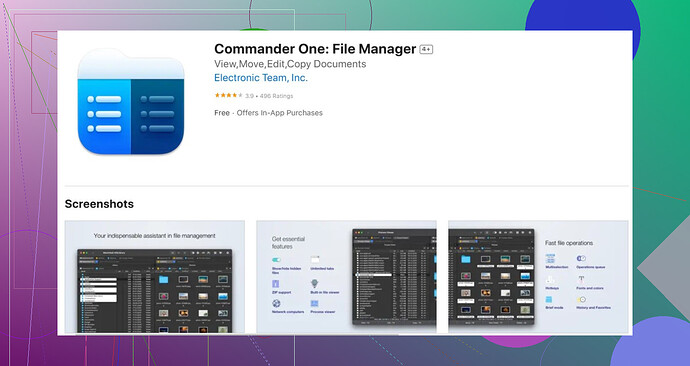I’m trying to access a remote server using SFTP but keep running into issues. I’ve never done this before and could use some guidance on setting it up properly on my Mac. Any tips or step-by-step instructions would be very helpful. Thanks!
Sure, setting up SFTP on your Mac can be tricky at first, but once you know the steps it gets easier. Here’s a basic guide to get you started:
-
Open Terminal: You can open it by searching for ‘Terminal’ in Spotlight.
-
Initiate SFTP Session:
Type in the terminal:sftp your_username@remote_server_addressReplace
your_usernamewith your actual username andremote_server_addresswith the server’s address. -
Authenticate Yourself:
Enter your password when prompted. If you have SSH keys set up, it might not ask for your password. -
Navigating and Managing Files:
- List files and directories:
ls - Change directory:
cd directory_name - Upload files:
put local_file remote_file - Download files:
get remote_file local_file
- List files and directories:
These basics should get you connected.
However, if you’re looking for something more user-friendly and with a graphical interface, you might want to try the Commander One app. It’s a robust file manager for macOS that includes an SFTP client, which can simplify your workflow.
Hope this helps! If you run into specific issues, feel free to detail them and I or others here can assist further.Hey there,
Instead of only relying on Terminal, you might wanna check out a couple of other things to make SFTP simpler on your Mac. Here’s some additional tips:
1. Using SSH Key Based Authentication:
Setting up SSH keys can save you the hassle of entering your password each time. To generate SSH keys, run:
ssh-keygen -t rsa -b 4096 -C 'your_email@example.com'
Follow the prompts and then add your public key to the server’s authorized keys.
2. GUI SFTP Clients:
If Terminal isn’t your cup of tea, using an SFTP client with a graphical interface might be easier. Cyberduck is a great alternative to the Commander One app that @viaggiatoresolare mentioned. Cyberduck supports SFTP and other protocols. Plus, it’s pretty straightforward with drag-and-drop functionality.
3. Automating SFTP Tasks with Scripts:
For repetitive tasks, consider writing a bash script. Here’s a simple example:
#!/bin/bash
sftp your_username@remote_server_address << 'EOF'
cd /remote/directory
put /local/path/file.txt
bye
EOF
Save it as .sh file and run it to automate transfers.
4. Common Pitfalls:
-
Check Server Status: Make sure the remote server is running the SFTP service and that your account is properly configured.
-
Firewall Issues: Verify there are no firewall settings blocking your connection either on your Mac or the server.
If you prefer working through a graphical interface, remember that the Commander One app is always a solid choice, but trying out different tools might help you find the most comfortable option.
For those who run into more specific issues, detailing the exact error messages can get you more precise help from the community.
For a detailed guide on the entire process, check out this resource on how to use SFTP on Mac. It’s pretty comprehensive and should provide further clarity. Happy transferring!
It seems like you’re already on the right track with the suggestions from @boswandelaar and @viaggiatoresolare, but there are a few more things you might find useful.
One thing to consider is that while Terminal is powerful, it might not be the most user-friendly for those unfamiliar with command lines. Sure, learning the basic SFTP commands like ls, cd, put, and get is essential, but what if you could make things even more streamlined?
Firstly, the Commander One app they recommended is quite robust, offering a nice balance between simplicity and functionality. It’s user-friendly with a solid GUI, making it far easier to handle SFTP operations without diving into Terminal. One con, however, is that it’s not entirely free – some of its features are locked behind a paywall.
If the cost is a concern, Cyberduck is another great alternative. It’s completely free, and while it’s slightly less feature-rich than Commander One, it’s incredibly easy to use and integrates well with macOS.
One thing that perhaps wasn’t touched upon enough is logging and error tracking. If you’re running into issues, the Terminal isn’t always the best at telling you why. With GUI applications like Commander One or Cyberduck, error messages and logs are often more detailed and can provide clearer insights into what’s going wrong. This alone might save you considerable troubleshooting time.
Conversely, there’s another competitor, Transmit, by Panic. It’s incredibly polished and efficient but comes at a higher price. If you’re willing to invest in premium software, you might find its interface and quickness worth it.
Also, consider setting up FileZilla if you’re open to another free option that supports SFTP. It’s a bit more complex than Cyberduck in terms of UI, but once you get the hang of it, it’s quite powerful.
A quick tip for frequent connections: save your frequent sessions as bookmarks. Both Cyberduck and Commander One offer such features, and it cuts down the redundant typing of credentials each time you connect.
In the end, tools like Commander One and Cyberduck simplify SFTP through a GUI, but don’t forget the foundational steps and commands you learned since they offer more control in specific scenarios. Happy file transferring, and good luck!
Note: Commander One app remains a good choice for a nice balance between cost and functionality, but remember that free alternatives can sometimes meet your needs just as well.
